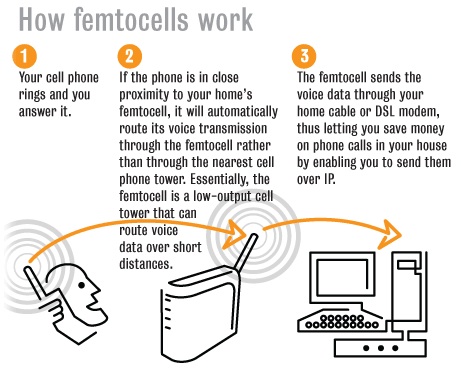AT&T testing Femtocells to boost in-home cell phone signals

A while back, my family and I were living in a Silicon Valley neighborhood that hugged some rolling foothills. While the view was scenic, the cell phone signal in the house was horrible. In fact, the only way I could even use my cell phone was to literally go out into the middle of our street and stand on top of the manhole cover. (Don't ask me how I discovered this. i just know that it worked.)
Now, AT&T is testing a new technology that would boost in-home cell phone signals and could roll it out in trial markets as early as next year. The signal boosts comes from "femtocells," small boxes that use low-power wireless signals and a home's high-speed Internet connection to relay the signals and create a miniature cell tower for the home, according to an Associated Press report. Sprint Nextel has already rolled out femtocells under the Airave brand and Verizon Wireless is reportedly also considering them, the AP reported.
Earlier this year, one of the concerns about femtocells was interference with cell towers and other femtocells clustered in a dense area - such as an apartment building. And there's still some concerns about the signals clashing with other devices - such as your PC, the WiFi-connected XBox - that utilize the home's high-speed data connection. In those cases, voice signals need to have a higher priority so that calls aren't compromised. Otherwise, what's the point? I could just go back to standing in the middle of the street.
And, as with anything that taps into my home broadband connection, I'd want to know how the usage impacts the usage caps that broadband providers such as Comcast are imposing.
(Graphic credit: NetworkWorld)
